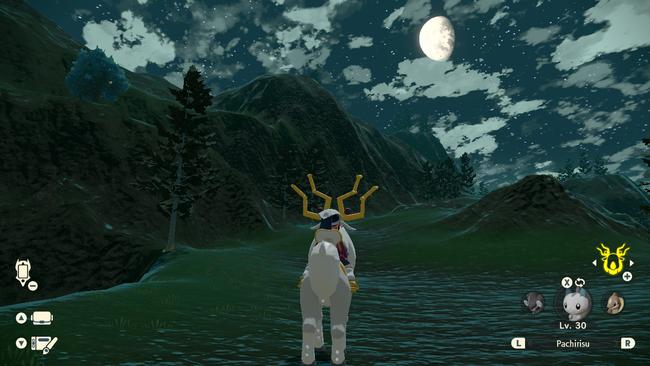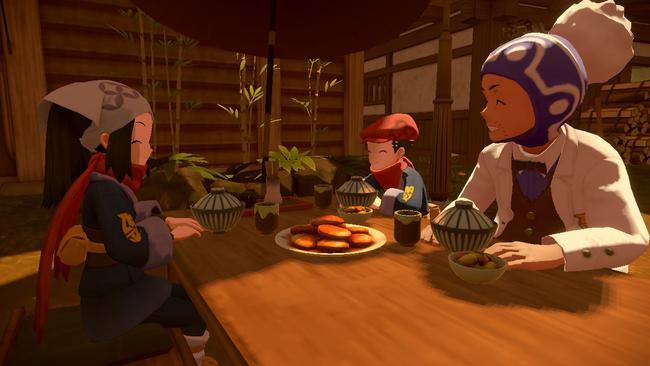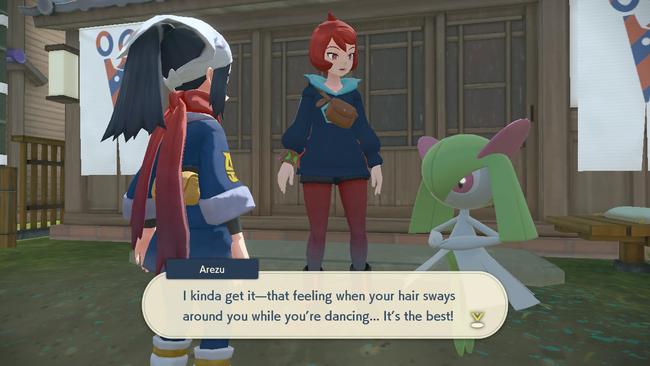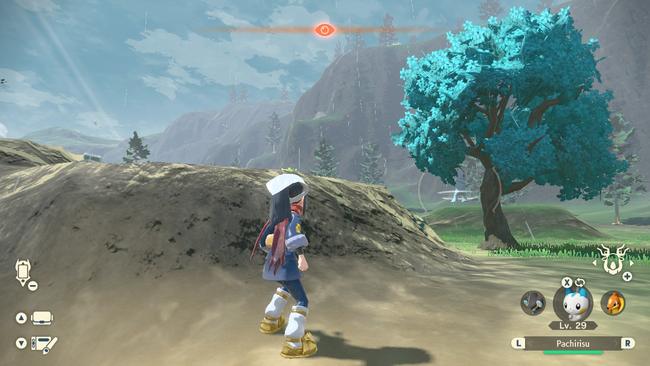
Pokemon Legends: Arceus Review
Pokemon Legends: Arceus freshens the ol' series formula with inspiration from action and open-world RPGs. In this updated paradigm, players take on the role of a research assistant helping with the first-ever Pokedex instead of a trainer preparing for a regional league. Game Freak complements that shift with more ways than ever to observe, capture, and battle with Pokemon. We’re not collecting gym badges or busting crime syndicates, but we still are “catching them all.”
It all starts with a crack in the sky. Our hero, Rei or Akari, falls from said crack into Hisui, the feudal era setting that overlaps with what’s known as Sinnoh in the future. Professor Laventon immediately asks for help rounding up his runaway Pokemon: Rowlet, Cyndaquil, and Totodile. After the player impresses him with their capture skills, the Professor then brings them to Jubilife Village to join the Galaxy Expedition Team. Soon after, you start work capturing Pokemon for the Pokedex.
It’s a bit of a slow start with how the players endure two instances of capture mechanics explanations. However, once that’s over, the world’s your Clamperl.
It's a whole new world

Instead of just encountering Pokemon in one-on-one traditional showdowns, players interact with them in real-time using a number of items found in the wild or crafted at a bench. Pokemon roam the fields similar to how they do in Pokemon Sword and Shield. However, they can now properly flee, fight, and idle like actual wildlife. Behaviors range from docile to aggressive based on the species, and it's up to the player to judge how to best approach them.
Items, and the ability to throw them, encourage players with ways to more efficiently capture each species they may encounter. Hurl a Mud Ball to temporarily stun a Pokemon or throw a Lure Cake to distract it? Now, there’s more to consider than just the simple “battle, weaken, and then capture.”
"Agile" and "Strong" style moves add a layer of strategy to the typical turn-based combat, too. Players might choose to go for an Agile style in an attempt to fit in two turns before their opponent, or Strong style to finish them off before they can retaliate. They can also swap Pokemon moves at will, meaning Pokemon will always remember all their moves, though they can only use four at them at a time.
Game Freak also treats players to a slew of new RPG mechanics outside of battle. It’s not just the Pokemon putting their health on the line — it’s the trainer, too. Dodge rolls and crouching near the ground, almost like a lite action game, which works to emphasize the danger absent from most games in the series. Many of the boss battles also involve throwing items at opportune times and dodging Pokemon attacks, so it's like the player does some "battling" on their own.
All these points manifest in an experience that feels a bit more authentic than previous Pokemon outings, with more control than players have had in past games.
Battling takes a backseat

Also, interestingly enough, battling isn't as prominent a goal here in Pokemon Legends. My typical Pokemon playthrough usually means gradually curating a team of Pokemon and leveling them up high enough to one-hit KO everything in the area before moving on. I quickly found that wasn’t going to fly here.
Stats don’t work the same way as they do in the core games. A Pokemon ten levels higher than your own would typically mean you don’t stand a chance. However, even lower-level Pokemon can eat a sizeable chunk of your health in Pokemon Legends. It also means less of a need to grind to higher levels at each stage of the game. In fact, some people might find it faster to just bench their current Pokemon when they inevitably find a higher-level one in the next area.
Pokemon Legends also implements a group leveling system that gives experience to all non-fainted Pokemon in your party. It's like an ever-present Exp. Share, which keeps team-building manageable even if you constantly swap around your ‘mons. Farming materials, capturing Pokemon, and battling should all collectively raise your party members' levels. It also makes it easier for players to experiment with teams and complete specific tasks for the Pokédex without the same grind found in the core series.
The plot (or lack of it)

Unfortunately, Pokemon can only inch forward so much at a time. Pokemon Legends focused on mending the political relationships between the Diamond Clan, Pearl Clan, and the Galaxy Expedition Team, and stuffed most of the answers to the game's biggest questions into postgame.
Some subplots fizzled out too early to seem necessary and missed opportunities to strengthen characters. Many characters, especially the wardens and the villains, leaned too heavily on gimmicks or didn't have enough of a role to leave an impression. Sure, the game touched on some mature notes, especially the concept of survival in political, societal, and literal ways. However, it veered into a safe, unremarkable ending instead of coming to a meaningful resolution.
On a lighter note, Game Freak smashed the underlying subplot of people accepting Pokemon as companions instead of dangerous creatures in its sidequests. Plus, these requests neatly tie into players' to-do lists. Players could complete them at their own pace without disrupting the main plot or forcing them to break from exploration. The postgame then builds on the idea of investigating legendaries, which ties in well with the premise and main point of the game.
Unidentified flying Pokemon

One last thing: the graphics. People have been dunking on Pokemon Legends graphics since its initial reveal. Yes, it resembles 2000s era cell-shading, but it also includes a handful of natural wonders that make for some majestic screenshots. The art style also does a lot of the heavy-lifting when it comes to the charm.
However, that's pretty low on my hit list compared to the optimization. Pokemon often glitch about their habitats depending on how finicky the game feels at any time. It's enough to minorly affect gameplay, especially aiming Poke Balls, because of how unnaturally the Pokemon move. I found a flying Machop, which really doesn’t seem intentional.
Despite these flaws, Pokemon Legends: Arceus is the best Pokemon game in years. It’s highly possible to breeze through the story in 15-20 hours before rolling credits. Instead, I chose to spend nearly 30 hours meandering about the different areas catching Pokemon before deciding to "finish" the game. Big emphasis on finish, considering the postgame content. Even at the 30-hour mark, it still feels like hours of content can be spent on grinding for evolution items, completing sidequests, and wrapping up your research notes.
Pokemon Legends: Arceus is available for the Nintendo Switch. Also, if you do play, check out our Pokemon Legends: Arceus guides for help farming Shinies, finding evolution items, and more.